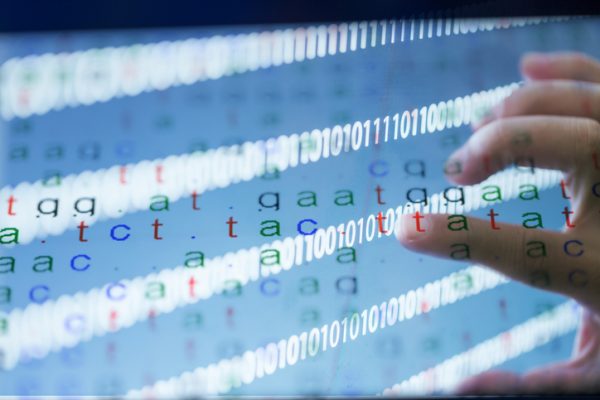
Two different gene therapy approaches to treating two blood disorders were the subject of presentations at a hematology meeting Friday, with both showing efficacy.
Cambridge, Massachusetts-based bluebird bio said that data from its Phase III study of Zynteglo (betibeglogene autotemcel) – also known as LentiGlobin – in transfusion-dependent beta-thalassemia (TDT) presented at the European Hematology Association’s virtual annual conference showed that a majority of patients achieved transfusion independence and maintained near-normal hemoglobin levels. Meanwhile, Boston-based Vertex Pharmaceuticals and Zug, Switzerland-based partner CRISPR Therapeutics announced the presentation of early data from their Phase I/II study of CTX001, a CRISPR/Cas9-based gene therapy, in TDT, as well as data from a study of the same therapy in sickle cell disease.
Shares of bluebird were up 2.6% on the Nasdaq in Friday afternoon trading, while shares of Vertex and CRISPR were respectively up 1% and down 1.5%. Zynteglo, which has a conditional marketing authorization for certain TDT patients in Europe, functions by adding a functional copy of a modified beta-globin gene into patients’ hematopoietic stem cells, allowing them to produce hemoglobin at levels that reduce or eliminate the need for transfusions. CTX001 is an ex-vivo gene-edited therapy in which patients’ own hematopoietic stem cells are engineered to produce high levels of fetal hemoglobin – the oxygen-carrying hemoglobin naturally present at birth and that switches to the adult form of hemoglobin – in red blood cells.
Data from two of bluebird’s studies – HGB-207, which enrolls patients who do not have the beta-0/beta-0 genotype; and HGB-212, enrolling patients who have that and other genotypes – were presented at EHA. Serious adverse events between the studies included veno-occlusive liver disease, low blood counts and fever, though no deaths were reported in either Phase III study.
Among the 23 patients enrolled in HGB-207, 19 were evaluable for efficacy, with 89% of those achieving transfusion independence after a median 19.4 months’ follow-up. Median weighted average total hemoglobin levels reached 11.9 grams per deciliter of blood. Previously, those patients had required a median 17.5 blood transfusions per year. Patients with beta-thalassemia require routine blood transfusions to maintain hemoglobin levels above 9.5 grams per decilieter.
In HGB-212, eight of the 15 patients treated were evaluable for efficacy, with six of those achieving transfusion independence, which they had maintained for a median 13.6 months. Among 13 patients with at least seven months of follow-up, 85% had not received a transfusion in more than seven months, despite having previously required a median 18.5 transfusions per year.

A Deep-dive Into Specialty Pharma
A specialty drug is a class of prescription medications used to treat complex, chronic or rare medical conditions. Although this classification was originally intended to define the treatment of rare, also termed “orphan” diseases, affecting fewer than 200,000 people in the US, more recently, specialty drugs have emerged as the cornerstone of treatment for chronic and complex diseases such as cancer, autoimmune conditions, diabetes, hepatitis C, and HIV/AIDS.
Meanwhile, Vertex and CRISPR presented data for two patients with TDT from their study of CTX001. The first patient had 15 months of follow-up after infusion and had become transfusion-independent, with total hemoglobin levels of 14.2 grams per deciliter and fetal hemoglobin of 13.5 grans per deciliter. Moreover, the patient had a 100% level of red blood cells expressing fetal hemoglobin, while allelic editing in the bone marrow was at 78.1% after six months and 76.1% at one year. That patient had required 34 transfusions per year.
While the allelic editing figure had fallen by two percentage points between the six- and 12-month marks, the company said in an emailed statement that the percentage difference was not meaningful and that it was “encouraging” that the number remained greater than 75%.
The second patient had required 61 transfusions per year. Five months after infusion, the patient had become transfusion-independent, with total hemoglobin at 12.5 grams per deciliter, fetal hemoglobin at 12.2 grams per deciliter and fetal hemoglobin-expressing red blood cells at 99.4%.
Data from the first patient in the sickle cell disease study consisted of a follow-up from data presented in November 2019, showing that nine months after infusion, the patient had become transfusion-independent and free of the veno-occlusive crises associated with the disease. Total hemoglobin levels were 11.8 grams per deciliter, with 46.1% fetal hemoglobin, 99.7% fetal hemoglobin-expressing red blood cells and bone marrow allelic editing at 81.4% after six months.
Photo: jxfzsy, Getty Images













